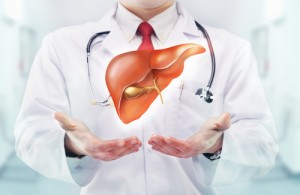 A study on a novel method for a better Organ Preservation System for transplantation, entitled, “Liver Preservation With Machine Perfusion and a Newly Developed Cell-Free Oxygen Carrier Solution Under Subnormothermic Conditions” was published in the American Journal of Transplantation by Dr. Paulo Fontes from the Department of Surgery, University of Pittsburgh Medical Center, Department of Surgery, University of Pittsburgh, Thomas E. Starzl Transplantation Institute, McGowan Institute of Regenerative Medicine and Department of Surgery, University of Pittsburgh, and colleagues. The researchers established a new preservation method that combines machine perfusion (MP) at subnormothermic conditions (21° C) and a new hemoglobin-based liver carrier (HBOC) solution.
A study on a novel method for a better Organ Preservation System for transplantation, entitled, “Liver Preservation With Machine Perfusion and a Newly Developed Cell-Free Oxygen Carrier Solution Under Subnormothermic Conditions” was published in the American Journal of Transplantation by Dr. Paulo Fontes from the Department of Surgery, University of Pittsburgh Medical Center, Department of Surgery, University of Pittsburgh, Thomas E. Starzl Transplantation Institute, McGowan Institute of Regenerative Medicine and Department of Surgery, University of Pittsburgh, and colleagues. The researchers established a new preservation method that combines machine perfusion (MP) at subnormothermic conditions (21° C) and a new hemoglobin-based liver carrier (HBOC) solution.
Liver transplantation (LT) is the last therapy available for end-stage liver hepatitis and irreversible, acute liver failure. Although there has been a small increase in the number of willing liver donors, LT remains significantly limited due to the difficulty of finding viable organs. As a result, the number of expanded criteria donors (ECDs), or donors with “medical complexities” has increased considerably, with donors after cardiac death (DCDs) following the same upward trend. Still, in the United States, liver usage remains suboptimal, with the rates of organ rejection ranging from 20% to 40%, due to oxygen deficiency during organ storage and transport, and 50% for donated livers obtained after cardiac death.
The research team developed a novel preservation system where a machine perfusion system pumped cooled, oxygen-rich fluid into donor livers, keeping the organs in optimal condition with significant improved liver function for 9 hours before transplantation, and with an increased survival rate of recipients. The team utilized a machine-perfusion (MP) device, originally developed by Organ Assist, a company in the Netherlands, and introduced a fluid with a hemoglobin-oxygen carrier constituent to deliver high levels of oxygen to the organ. The liver is immersed in the cold fluid that is pumped through tubes introduced in the large blood vessels of the organ to efficiently oxygenate the tissue.
“Standard practice is to use a method called cold static preservation, which uses tissue cooling to slow down metabolism with the aim of reducing the demand for oxygen and thus protecting cells from death,” explained Dr. Fontes in the press release. “In our new system, we pump a special fluid designed to deliver oxygen to the liver, creating an environment that supports normal function. The integrity of the cells and vital metabolic activity is sustained for eventual transplantation of the organ.”
The researchers transplanted the livers kept for 9 hours in the MP system – the usual time period between an organ’s collection and actual transplantation – into 6 pigs and compared them with 6 pigs transplanted with livers preserved by the standard method (the cold static preservation (CSP) under hypothermic (4° C) and low oxygen conditions).
They observed that all of the pigs that were transplanted with livers preserved using the MP survived, while only a third of the pigs that received the livers conserved by the standard method survived. They also analyzed several biomarkers to assess liver function, like production of bile, oxygen levels, inflammatory mediators, and found that the MP livers where in much better condition than the conventionally-preserved livers.
Dr. Fontes said that it was very clear that the pigs transplanted with the MP livers were in much better health than the others. “They didn’t look as ill as the animals treated with standard cold preservation. It was amazing.”
“This system has great potential to enhance our current standards for organ preservation, which should translate into more patients getting a life-saving procedure with potentially better outcomes,” Dr. Fontes said. “Not only that, we have hopes of a faster recovery because the liver could be less likely to become injured due to a lack of oxygen.”
By the end of 2015, this system could be tested on transplant patients at the University of Pittsburgh Medical Center. Hopefully, this new method will increase the number of high-quality livers available for transplant, thus decreasing the supply-demand imbalance of viable organs and giving more patients a second chance at living a fuller life.

